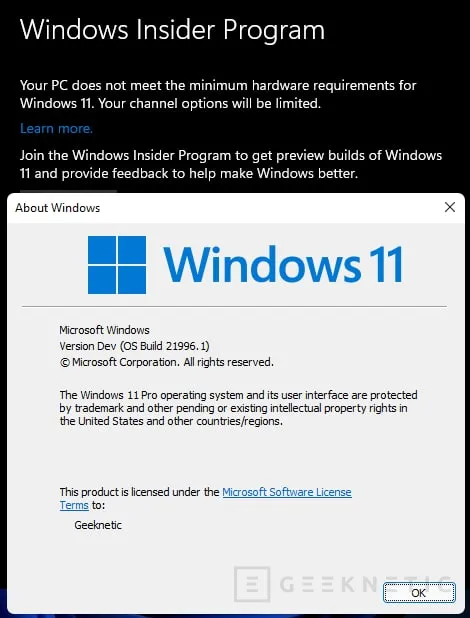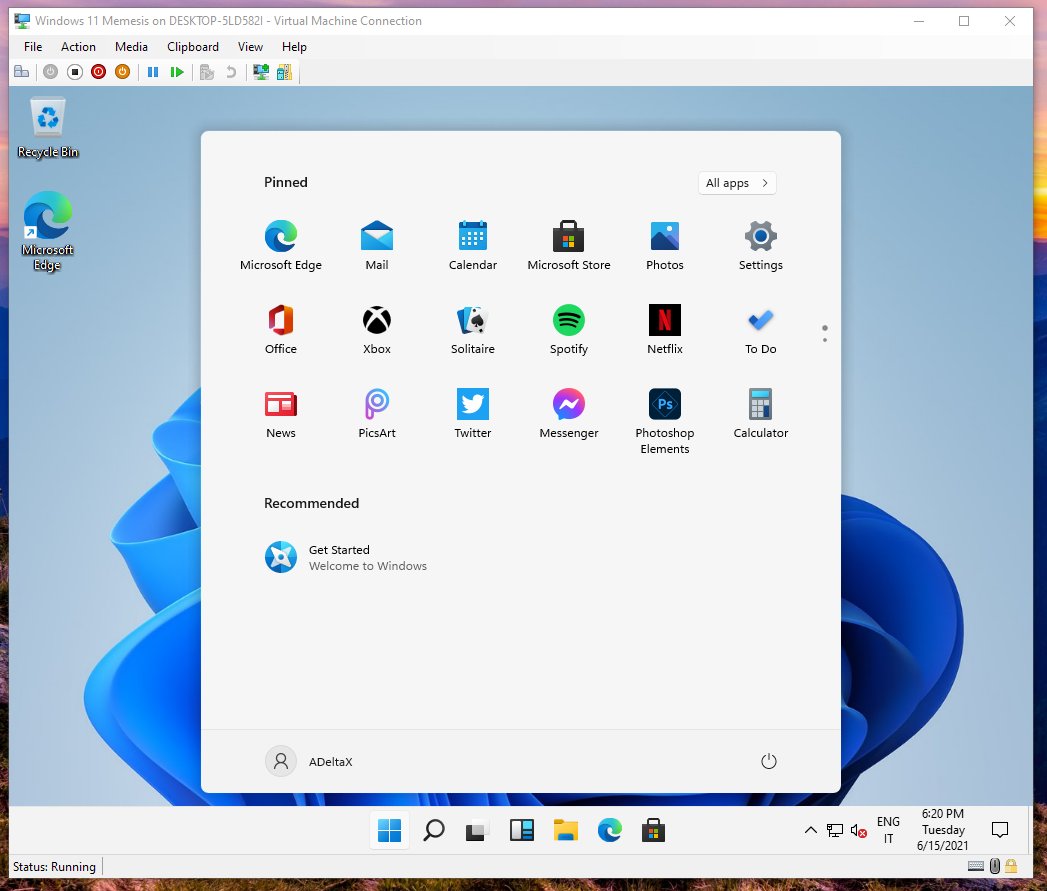Applies to

- Windows 11
Deployment planning
Windows 11 is an upcoming major version of the Windows NT operating system developed by Microsoft. Announced on June 24, 2021, with an expected release in late 2021, Windows 11 is the successor to Windows 10, released in 2015. Windows 11 will be available as a free upgrade to compatible Windows 10 devices through Windows Update. Provision and pre-configure new Windows 11 devices: Windows Autopilot enables you to deploy new Windows 11 devices in a “business-ready” state that includes your desired applications, settings, and policies. It can also be used to change the edition of Windows. For example, you can upgrade from Pro to Enterprise edition and gain the use of. The upgrade to Windows 11 is for the same edition as you have on your Windows 10 device. Devices with Windows 10 Pro installed will be upgraded to Windows 11 Pro. Devices running Windows 10 Enterprise will upgrade to Windows 11 Enterprise. Windows 11 Pro will not offer Windows 11 Pro in S mode, so you will need to switch out of S mode to upgrade. Microsoft shared a segment from last week's Windows 11 livestream as a standalone video. It shows the Surface Pro X running Windows 11 and focuses on how the operating system works well with touch. Windows 11 stems from recent efforts to reinvigorate the OS, following a string of internal experiments to deviate from the widely popular Windows 10. Windows 11 is real, and it's a big update.
This article provides guidance to help you plan for Windows 11 in your organization.
Since Windows 11 is built on the same foundation as Windows 10, you can use the same deployment capabilities, scenarios, and tools—as well as the same basic deployment strategy that you use today for Windows 10. You will need to review and update your servicing strategy to adjust for changes in Servicing and support for Windows 11.
At a high level, this strategy should include the following steps:
If you are looking for ways to optimize your approach to deploying Windows 11, or if deploying a new version of an operating system is not a familiar process for you, some items to consider are provided below.
Determine eligibility
As a first step, you will need to know which of your current devices meet the Windows 11 hardware requirements. Most devices purchased in the last 18-24 months will be compatible with Windows 11. Verify that your device meets or exceeds Windows 11 requirements to ensure it is compatible.
Microsoft is currently developing analysis tools to help you evaluate your devices against the Windows 11 hardware requirements. When Windows 11 reaches general availability, end-users running Windows 10 Home, Pro, and Pro for Workstations will be able to use the PC Health Check app to determine their eligibility for Windows 11. End-users running Windows 10 Enterprise and Education editions should rely on their IT administrators to let them know when they are eligible for the upgrade.
Enterprise organizations looking to evaluate device readiness in their environments can expect this capability to be integrated into existing Microsoft tools, such as Endpoint analytics and Update Compliance. This capability will be available when Windows 11 is generally available. Microsoft is also working with software publishing partners to facilitate adding Windows 11 device support into their solutions.

Windows 11 availability
Windows 11 Pro Product Key
The availability of Windows 11 will vary according to a device's hardware and whether the device receives updates directly, or from a management solution that is maintained by an IT administrator.
Managed devices
Managed devices are devices that are under organization control. Managed devices include those managed by Microsoft Intune, Microsoft Endpoint Configuration Manager, or other endpoint management solutions.
If you manage devices on behalf of your organization, you will be able to upgrade eligible devices to Windows 11 using your existing deployment and management tools at no cost when the upgrade reaches general availability. Organizations that use Windows Update for Business will have added benefits, such as:
- Ensuring that devices that don't meet the minimum hardware requirements are not automatically offered the Windows 11 upgrade.
- Additional insight into safeguard holds. While safeguard holds will function for Windows 11 devices just as they do for Windows 10 today, administrators using Windows Update for Business will have access to information on which safeguard holds are preventing individual devices from taking the upgrade to Windows 11.
Note
If you use Windows Update for Business to manage feature update deployments today, you will need to leverage the Target Version policy rather than Feature Update deferrals to move from Windows 10 to Windows 11. Deferrals are great for quality updates or to move to newer version of the same product (from example, from Windows 10, version 20H2 to 21H1), but they cannot migrate a device between products (from Windows 10 to Windows 11).
Also, Windows 11 has a new End User License Agreement. If you are deploying with Windows Update for Business Target Version or with Windows Server Update Services, you are accepting this new End User License Agreement on behalf of the end-users within your organization.
Unmanaged devices
Unmanaged devices are devices that are not managed by an IT administrator on behalf of an organization. For operating system (OS) deployment, these devices are not subject to organizational policies that manage upgrades or updates.
Windows 11 will be offered to eligible Windows 10 devices beginning later in the 2021 calendar year. Messaging on new devices will vary by PC manufacturer, but users will see labels such as This PC will upgrade to Windows 11 once available on products that are available for purchase.
The Windows 11 upgrade will be available initially on eligible, unmanaged devices to users who manually seek the upgrade through Windows Update. As with all Windows Update managed devices, the Windows Update Settings page will confirm when a device is eligible, and users can upgrade if they choose to.
Just like Windows 10, the machine learning based intelligent rollout process will be used when rolling out upgrades. Machine learning uses a combination of testing, close partner engagement, feedback, diagnostic data, and real-life insights to manage quality. This process improves the update experience, and ensures that devices first nominated for updates are the devices likely to have a seamless experience. Devices that might have compatibility issues with the upgrade get the benefit of resolving these issues before the upgrade is offered.
Windows 11 readiness considerations
The recommended method to determine if your infrastructure, deployment processes, and management tools are ready for Windows 11 is to join the Windows Insider Program for Business. As a participant in the Release Preview Channel, you can validate that your devices and applications work as expected, and explore new features.
As you plan your endpoint management strategy for Windows 11, consider moving to cloud-based mobile device management (MDM), such as Microsoft Intune. If a cloud-only approach isn't right for your organization just yet, you can still modernize and streamline essential pieces of your endpoint management strategy as follows:

- Create a cloud management gateway (CMG) to manage Configuration Manager clients over the internet.
- Attach your existing Configuration Management estate to the cloud with tenant attach so you can manage all devices from within the Microsoft Endpoint Manager admin center.
- Use co-management to concurrently manage devices using both Configuration Manager and Microsoft Intune. This allows you to take advantage of cloud-powered capabilities like Conditional Access.
For more information on the benefits of these approaches, see Cloud Attach Your Future: The Big 3.
The introduction of Windows 11 is also a good time to review your hardware refresh plans and prioritize eligible devices to ensure an optimal experience for your users.
Servicing and support
Along with end-user experience and security improvements, Windows 11 introduces enhancements to Microsoft's servicing approach based on your suggestions and feedback.
Quality updates: Windows 11 and Windows 10 devices will receive regular monthly quality updates to provide security updates and bug fixes.
Feature updates: Microsoft will provide a single Windows 11 feature update annually, targeted for release in the second half of each calendar year.
Lifecycle:
- Home, Pro, Pro for Workstations, and Pro for Education editions of Windows 11 will receive 24 months of support from the general availability date.
- Enterprise and Education editions of Windows 11 will be supported for 36 months from the general availability date.
When Windows 11 reaches general availability, a consolidated Windows 11 update history will be available on support.microsoft.com, similar to what is available today for Windows 10. Similarly, the Windows release health hub will offer quick access to Windows 11 servicing announcements, known issues, and safeguard holds.
It is important that organizations have adequate time to plan for Windows 11. Microsoft also recognizes that many organizations will have a mix of Windows 11 and Windows 10 devices across their ecosystem. Devices on in-service versions of Windows 10 will continue to receive monthly Windows 10 security updates through 2025, as well as incremental improvements to Windows 10 to support ongoing Microsoft 365 deployments. For more information, see the Windows 10 release information page, which offers information about the Windows 10 Semi-Annual Channel and Long-term Servicing Channel (LTSC) releases.
Application compatibility
Microsoft's compatibility promise for Windows 10 is maintained for Windows 11. Data from the App Assure program shows that Windows 10 compatibility rates are over 99.7% for enterprise organizations, including line of business (LOB) apps. Microsoft remains committed to ensuring that the apps you rely upon continue to work as expected when you upgrade. Windows 11 is subject to the same app compatibility validation requirements that are in place for Windows 10 today, for both feature and quality updates.
Windows 11 Pro free. download full Version
App Assure and Test Base for Microsoft 365
If you run into compatibility issues or want to ensure that your organization's applications are compatible from day one, App Assure and Test Base for Microsoft 365 can help.


App Assure: With enrollment in the App Assure service, any app compatibility issues that you find with Windows 11 can be resolved. Microsoft will help you remedy application issues at no cost. Since 2018, App Assure has evaluated almost 800,000 apps, and subscriptions are free for eligible customers with 150+ seats.
Test Base for Microsoft 365: For software publishers, systems integrators, and IT administrators, Test Base for Microsoft 365 (currently in private preview) is a service that allows you to validate your apps across a variety of Windows feature and quality updates and environments in a Microsoft-managed Azure environment. Enterprise organizations can also nominate their software publishers for participation by completing a short form.
Windows 11
You might already be using App Assure and Test Base in your Windows 10 environment. Both of these tools will continue to function with Windows 11.